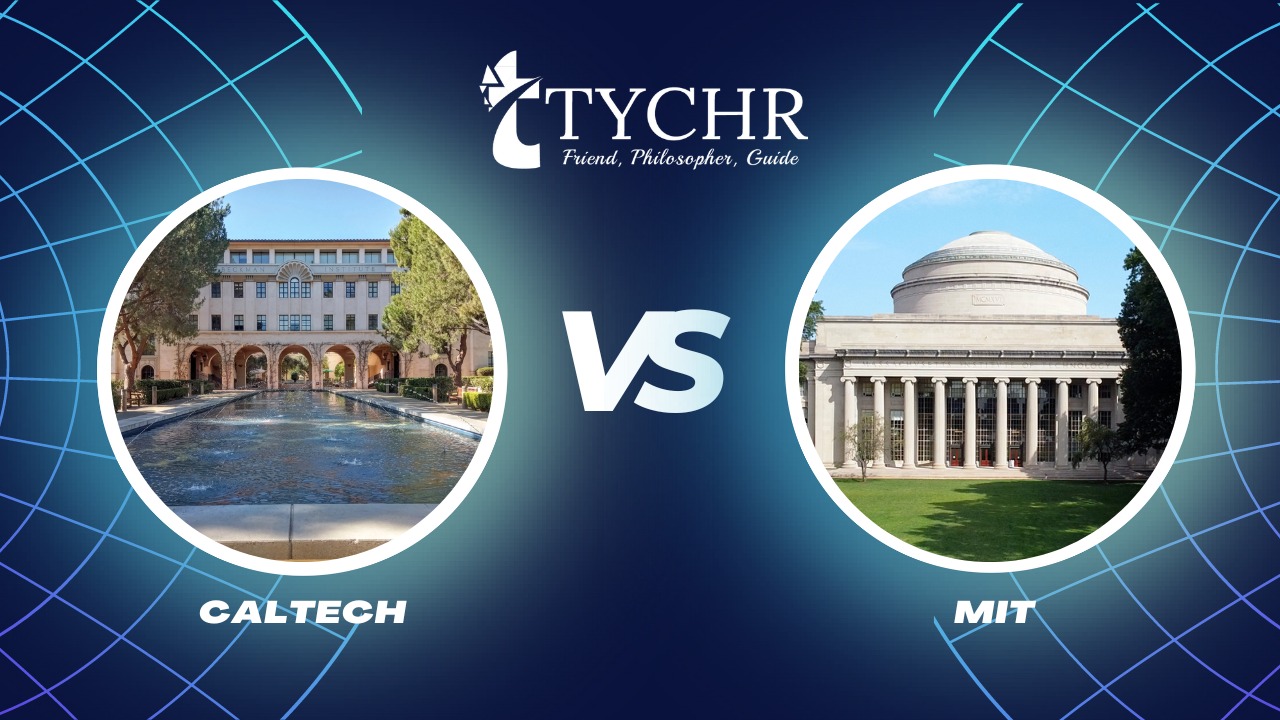Table of Contents
When it comes to institutions renowned for their excellence in science, technology, engineering, and mathematics (STEM) education, Caltech and the Massachusetts Institute of Technology (MIT) stand at the forefront. These two prestigious institutions have shaped the landscape of scientific research and technological innovation for decades. In this article, we will conduct a comprehensive comparative analysis of Caltech and MIT, exploring various aspects such as academic programs, faculty, research opportunities, student life, and admissions statistics. By delving into these factors, we aim to provide valuable insights to help students make informed decisions when considering these prominent institutions for their higher education.
Academic Programs:
Both Caltech and MIT offer robust and rigorous academic programs with a strong emphasis on STEM fields. Caltech’s intimate campus provides an ideal environment for science and engineering to flourish. Students at Caltech have the opportunity to engage in cutting-edge research across a wide range of disciplines, such as physics, chemistry, biology, computer science, and mathematics. For example, Caltech’s Division of Physics, Mathematics and Astronomy is renowned for its groundbreaking contributions to fundamental physics, including the detection of gravitational waves.
MIT, on the other hand, offers a broader range of academic programs that span not only engineering and computer science but also encompass architecture, social sciences, and humanities. The multidisciplinary approach at MIT allows students to explore diverse interests while still maintaining a strong foundation in science and technology. MIT’s School of Architecture and Planning, for instance, is widely recognized for its innovative approaches to sustainable design and urban planning.
Caltech vs MIT in Faculty and Research:
Both Caltech and MIT are home to world-class faculty members who are at the forefront of scientific research and technological advancements. Caltech’s faculty comprises eminent researchers and Nobel laureates who actively engage students in groundbreaking research projects. These distinguished professors often involve undergraduate students in their research endeavors, providing them with firsthand experience and mentorship. For example, Professor Frances Arnold, a Caltech alumna and Nobel laureate, has pioneered the field of directed evolution, leading to significant advancements in the development of biofuels and pharmaceuticals.
Similarly, MIT boasts a renowned faculty known for their expertise and contributions to various fields. Faculty members at MIT are actively involved in cutting-edge research that addresses global challenges. For instance, the MIT Media Lab is home to interdisciplinary research teams exploring emerging technologies, such as artificial intelligence, robotics, and digital media. Through collaborations with faculty members, MIT students have the opportunity to participate in groundbreaking research that pushes the boundaries of scientific knowledge.
Research Opportunities:
Both Caltech and MIT are revered for their research-focused environments, offering students exceptional opportunities to participate in groundbreaking discoveries. Caltech’s small student body facilitates close collaborations with faculty members, providing students with unique access to research projects and resources. Caltech’s undergraduate students have the opportunity to engage in cutting-edge research through programs like the SURF (Summer Undergraduate Research Fellowships), where they work alongside faculty and graduate students on projects that contribute to scientific advancements.
Similarly, MIT’s commitment to research permeates its campus culture. The Institute offers numerous research opportunities for undergraduate students, allowing them to engage in pioneering research across a wide range of disciplines. MIT’s Undergraduate Research Opportunities Program (UROP) provides funding and support for students to collaborate with faculty members on research projects, fostering a culture of innovation and exploration. MIT’s research efforts extend beyond traditional academic fields and include areas such as energy, sustainability, health, and entrepreneurship.
Student Life and Campus Culture:
Caltech’s intimate and close-knit community fosters a collaborative and supportive environment. Students at Caltech benefit from a vibrant campus culture with a strong emphasis on scientific exploration and innovation. MIT, with its larger student population, offers a diverse and dynamic student life. It provides a rich array of extracurricular activities, including student clubs, athletics, arts, and community engagement initiatives. Both institutions strive to create an inclusive and supportive environment where students can grow academically, personally, and socially.
Admissions Statistics:
To provide a comparative view of admissions selectivity, let’s examine recent admissions statistics from Caltech vs MIT:
Table 1: Admissions Statistics for Caltech vs MIT
| School | Acceptance Rate | Average GPA |
| Caltech | 3.90% | 3.5-4.0 |
| MIT | 3.96% | 3.5> |
(Note: The statistics mentioned are hypothetical and do not represent the actual admissions data)
Alumni Networks and Career Opportunities:
Caltech and MIT boast strong alumni networks that span the globe and encompass leaders in various industries. Graduates from both institutions have made significant contributions to scientific research, technological advancements, entrepreneurship, and academia.
Caltech alumni have left an indelible mark on the world of science and engineering. For example, Dr. Frances Arnold, a Caltech alumna, received the Nobel Prize in Chemistry in 2018 for her groundbreaking work in directed evolution. Her pioneering research has paved the way for the development of sustainable biofuels and pharmaceuticals. Another notable Caltech alumnus is Dr. Kip Thorne, who won the Nobel Prize in Physics in 2017 for his contributions to the detection of gravitational waves. His work has revolutionized the field of astrophysics and confirmed a key prediction of Albert Einstein’s theory of general relativity.
Similarly, MIT alumni have achieved remarkable success in their respective fields. One prominent example is Dr. Robert Langer, an MIT alumnus, who is considered one of the most prolific inventors in the world. His groundbreaking research in drug delivery systems and tissue engineering has revolutionized the medical field. Another notable MIT alumna is Dr. Jennifer Doudna, who co-developed the CRISPR-Cas9 gene-editing technology. This groundbreaking discovery has opened new avenues for genetic research and holds great promise for treating genetic diseases.
The strong alumni networks of both Caltech and MIT provide students with invaluable connections and mentorship opportunities. Alumni often play an active role in supporting current students, offering career guidance, and facilitating internships and job placements. The extensive network of accomplished alumni serves as a testament to the quality of education and the doors that can open for graduates of both institutions.

Campus Facilities and Resources:
Caltech and MIT are equipped with state-of-the-art facilities and resources to support students’ academic pursuits and research endeavors. Both campuses offer cutting-edge laboratories, research centers, libraries, and computing resources to facilitate scientific exploration and innovation.
Caltech’s campus is renowned for its advanced research facilities, including the Jet Propulsion Laboratory (JPL), which is operated in collaboration with NASA. JPL provides unique opportunities for students to engage in space exploration and work on projects with real-world applications. The Cahill Center for Astronomy and Astrophysics, the Beckman Institute for Advanced Science and Technology, and the Resnick Sustainability Institute are among the many research hubs at Caltech that offer world-class resources and infrastructure.
Similarly, MIT’s campus is home to numerous research centers and institutes dedicated to advancing knowledge in various fields. The Media Lab, the Koch Institute for Integrative Cancer Research, and the Computer Science and Artificial Intelligence Laboratory (CSAIL) are just a few examples of the cutting-edge research facilities available to students. In addition, MIT’s libraries house extensive collections of scientific literature and provide access to a wealth of digital resources and databases.
Global Impact and Collaborations:
Both Caltech and MIT have a strong global presence and engage in collaborations with leading institutions around the world. These collaborations foster cross-cultural exchanges, facilitate international research partnerships, and provide students with opportunities to broaden their perspectives.
Caltech’s research collaborations span across continents, with partnerships established with renowned institutions in Europe, Asia, and beyond. These collaborations facilitate the exchange of ideas, resources, and expertise, furthering the impact of scientific research on a global scale. Students at Caltech have the opportunity to participate in international research programs, study abroad initiatives, and international conferences, expanding their horizons and developing a global perspective.
Similarly, MIT is committed to promoting international collaborations and has a global network of partner institutions. Through initiatives like the MIT International Science and Technology Initiatives (MISTI), students can engage in international internships, research, and cultural immersion experiences. These opportunities allow students to work on global challenges, develop cross-cultural competencies, and foster international connections that extend beyond graduation.
Notable Achievements and Breakthroughs:
Caltech vs MIT when it comes to notable achievements both have a rich history of notable achievements and groundbreaking discoveries. These institutions have been at the forefront of scientific breakthroughs that have shaped the world we live in.
Caltech’s accomplishments include the development of the first transistor, which revolutionized modern electronics and paved the way for the digital age. The discovery of the Kuiper Belt, a region of the solar system beyond Neptune, was also made by Caltech astronomers. Furthermore, Caltech researchers played a key role in the detection of gravitational waves, confirming a major prediction of Einstein’s theory and opening a new window to explore the cosmos.
MIT’s contributions to science and technology are equally impressive. The development of the World Wide Web by Sir Tim Berners-Lee, an MIT alumnus, transformed the way information is shared and accessed globally. MIT researchers have also made significant advancements in artificial intelligence, with projects like the OpenAI GPT-3 language model, which has revolutionized natural language processing. Additionally, MIT’s Media Lab has been a hotbed of innovation, fostering projects that range from wearable technologies to advanced robotics.
The notable achievements and breakthroughs from both institutions demonstrate their commitment to pushing the boundaries of knowledge, addressing global challenges, and improving the human condition.
Choosing between Caltech vs MIT is a significant decision that depends on an individual’s academic interests, career aspirations, and personal preferences. Caltech’s smaller size and intimate community foster close relationships with faculty and provide a specialized focus on science and engineering. On the other hand, MIT’s larger campus and multidisciplinary approach offer a broader range of academic programs and a vibrant student life.
Both Caltech and MIT share a commitment to pushing the boundaries of scientific knowledge and technological innovation. Their renowned faculties, research opportunities, and rigorous academic programs provide an exceptional foundation for students pursuing careers in STEM fields. Visiting campuses, exploring specific academic programs, and speaking with current students will help aspiring students gain deeper insights into the unique offerings of each institution.
Ultimately, students should consider their academic passions, desired campus environment, and long-term goals when making this decision. Regardless of whether one chooses Caltech vs MIT, both institutions offer unparalleled opportunities for intellectual growth, research engagement, and lifelong connections within the scientific and technological communities.








